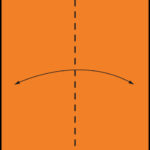Fruit flies are a common nuisance in homes, seemingly appearing out of nowhere, especially when there’s ripe fruit around. This sudden appearance is due to their rapid breeding cycle and attraction to human food sources. These tiny pests, often seen hovering around fruit bowls or drains, are more than just annoying; understanding their biology and habits is key to controlling them.
Fruit Fly Biology and Rapid Reproduction
Fruit flies are known for their incredibly fast reproduction rates. They typically lay their eggs on fermenting fruits and vegetables, or in moist, decaying organic matter like unclean drains. A single female fruit fly can lay up to 500 eggs, and the entire life cycle, from egg to adult, can be completed in as little as a week under favorable conditions. This rapid development explains why fruit fly populations can explode so quickly, turning a minor issue into a significant infestation in a short period.
Sources of Fruit Flies in Your Home
Understanding where fruit flies come from is crucial for effective prevention. These pests are attracted to homes by the scent of fermenting food. Overripe fruits and vegetables left on countertops are prime attractants. However, fruit flies can also be drawn to other sources such as:
- Unclean Drains: Drains with built-up organic matter provide ideal breeding grounds.
- Garbage Disposals: Food scraps in garbage disposals can attract fruit flies.
- Trash Cans: Especially those containing food waste, are hotspots for fruit fly activity.
- Spilled Drinks and Food: Fermenting spills, even small ones, can be enough to attract these pests.
- Contaminated Produce from Outside: Sometimes, fruit flies or their eggs can be brought into the home on fruits and vegetables purchased from stores or gardens.
When Do Fruit Flies Become a Problem?
While fruit flies can be a year-round issue, they are most prevalent during the warmer months, particularly summer and fall. This is when fresh fruits and vegetables are abundant and temperatures are ideal for their rapid breeding. The smell of ripening and decaying produce becomes stronger in warmer temperatures, further attracting these insects indoors. However, if food sources are available indoors, fruit flies can thrive even in winter, making them a persistent pest throughout the year.
Fruit Fly Prevention and Control Strategies
Preventing fruit flies involves eliminating their food sources and breeding grounds. Effective strategies include:
- Promptly Dispose of Overripe Produce: Don’t leave ripe fruit sitting out on counters. Store them in the refrigerator or dispose of them properly as soon as they become overripe.
- Regularly Clean Drains and Garbage Disposals: Use drain cleaners or boiling water to eliminate organic buildup in drains and garbage disposals.
- Clean Spills Immediately: Wipe up any food or drink spills right away, especially sugary substances.
- Maintain Clean Trash Cans: Ensure trash cans, especially kitchen bins, are cleaned regularly and have tight-fitting lids.
- Inspect Produce Brought Indoors: Check fruits and vegetables for signs of fruit flies or their eggs when bringing them home.
- Consider Professional Pest Control: For persistent infestations, professional pest control services like Orkin can provide effective and targeted solutions. Fruit flies can carry and spread bacteria, making their control important for hygiene.
While DIY methods can help manage fruit flies, professional pest control is often the most effective way to eliminate infestations, especially for ongoing or severe problems. Understanding “What Do Fruit Flies” seek and their life cycle is the first step in taking effective control measures and keeping your home fruit fly-free.

